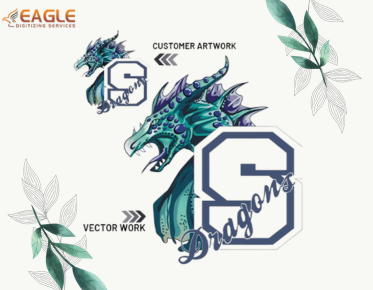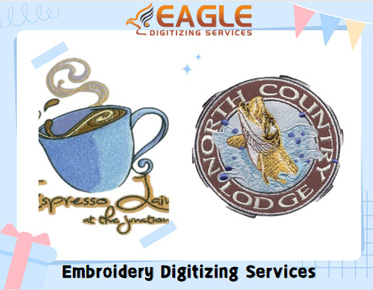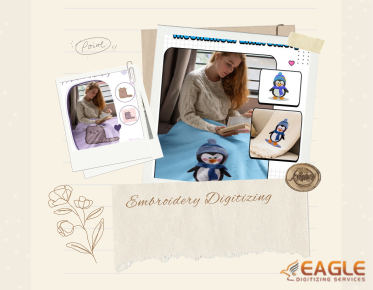Create Like a Pro: The Best Free Vector Tools to Try Today
Vector design is the foundation of modern digital artistry.
Vectors are omnipresent, from the iconic logos of global brands to the clean,
minimalist illustrations enhancing today’s websites. But here’s the twist—these
professional-grade designs no longer demand pricey software. Free vector tools
dismantle old barriers, democratize design, and empower creators of all levels.
Why Vector Design is the Backbone of Modern Graphics
Vector graphics aren’t just another design option; they’re an
essential tool in any designer’s arsenal. Their unique ability to remain crisp
and flawless regardless of size makes them indispensable in various industries.
Whether it’s a logo destined for a billboard or a delicate graphic for a mobile
app, vectors deliver precision and scalability unmatched by raster-based
images.
What
Makes Vector Art Tools Essential?
The Science of Vectors: Crisp,
Scalable, and Versatile
Vectors are the mathematician's answer to artistry—a harmonious blend
of precision and creativity. Unlike raster graphics, which rely on a fixed grid
of pixels to form an image, vectors operate on mathematical equations. These
equations define points, lines, curves, and shapes in a two-dimensional space,
resulting in graphics that can be scaled infinitely without losing clarity.
At the heart of a vector is its formula. Every curve and line is
plotted using coordinates and paths like a geometric blueprint. This means when
you resize a vector image, whether shrinking it to fit a business card or
blowing it up to fill a highway billboard, the calculations adjust dynamically.
The result? Flawless sharpness, regardless of size.
When
Pixels Fail: Why Designers are Shifting to Vectors
Raster graphics crumble under pressure. Zoom in too much, and you’re left with a mosaic of blurry
squares. The closer you get, the more the image deteriorates. This is the
limitation of raster graphics, where every pixel represents a piece of the
visual puzzle. When scaled beyond their original size, these tiny squares
become more apparent, leading to a jagged and pixelated appearance. It’s like
trying to view a masterpiece through a magnifying glass—it loses its clarity,
and the edges turn to mush.
Who Benefits Most from Vector Art Tools?
From graphic designers and marketers to architects and educators,
vector tools are versatile enough to cater to a wide audience. Whether you’re
creating a branding kit, a classroom infographic, or a building layout, vector
software helps you elevate your work to professional standards.
Key
Features to Look for in a Vector Tool
Must-Have
Basics: Shapes, Paths, and Layers
Every vector tool should provide customizable shapes, path-editing
options, and layered organization. These features form the bedrock of any
design project, allowing for endless creativity and precision in execution.
Customizable shapes enable designers to create unique, tailored elements that
perfectly fit their vision. Path-editing options offer fine control over every
curve and angle, ensuring that no detail is left to chance. Meanwhile, layered
organization keeps complex designs manageable, providing clarity and
flexibility as projects evolve. Together, these core functions empower
designers to transform ideas into polished, professional designs.
Advanced
Capabilities: Gradient Meshes and Boolean Operations
For those who aim to push creative boundaries, advanced tools like
gradient meshes (for seamless color blending) and Boolean operations (to
combine or subtract shapes) are indispensable. These features allow designers
to create intricate, lifelike visuals that would be nearly impossible with
basic tools. Gradient meshes enable smooth transitions between colors, giving
designs a realistic, three-dimensional feel. Meanwhile, Boolean operations
allow for precise manipulation of shapes, empowering creators to build complex
designs with ease, whether by merging elements or subtracting parts to create
custom forms. Together, these tools unlock endless possibilities for designers
eager to experiment and refine their craft.
Top Free Vector Tools to Elevate Your Creativity
Inkscape: The Open-Source
Powerhouse
Inkscape has earned its reputation as a free design powerhouse,
beloved by both professionals and hobbyists alike. Its extensive feature set,
which includes everything from bezier curves to advanced path effects, stands
toe-to-toe with high-end software like Adobe Illustrator. What sets Inkscape
apart is its open-source nature, which means it's continuously updated and
improved by a dedicated global community. This active community ensures a
constant stream of new features and an abundance of tutorials, making Inkscape
a go-to tool for those looking to expand their design capabilities. Whether
you're crafting intricate illustrations or working on web graphics, Inkscape
offers the flexibility and depth that more expensive tools provide.
To master Inkscape’s advanced features, start by experimenting with
the snapping tools for precision and alignment. These tools ensure that your
designs are accurate and symmetrical, saving time in the process. Additionally,
dive into Inkscape’s extensions, which can add a range of powerful capabilities
like pattern generation or bitmap tracing, taking your designs to the next
level. These features, along with Inkscape’s powerful vector tools, make it a
versatile and valuable option for any designer.
Gravit Designer: Sleek,
Cloud-Based, and Intuitive
Gravit
Designer stands out as a cloud-based design tool that strikes the perfect
balance between sleekness and functionality. With a modern and intuitive
interface, it appeals to designers who want an easy-to-use platform without
sacrificing advanced features. Unlike many free tools, Gravit Designer’s
cloud-based nature means your work is always accessible, no matter where you
are or what device you're using. This flexibility makes it an excellent choice
for remote work or collaboration across teams, allowing users to access their
projects from virtually anywhere. Its cross-platform functionality ensures that
your workflow remains uninterrupted, whether you're working from a desktop or a
tablet.
Gravit Designer also offers a wealth of features that give your
creative projects a polished, professional edge. From advanced typography tools
to non-destructive Boolean operations, this tool allows you to fine-tune every
detail of your designs. The ability to manipulate shapes, create complex vector artwork, and experiment with different
styles makes Gravit Designer a great option for both beginners and
professionals. Unlocking its full potential can transform your designs,
allowing you to create intricate, eye-catching visuals.
Vectr: Beginner-Friendly and Collaborative
Vectr
is the ideal choice for those new to the world of vector design, thanks to its
straightforward interface and low learning curve. Its simplicity doesn’t mean
it lacks power—Vector provides all the essential tools needed to create
stunning vector graphics, from shapes and paths to text manipulation and
styling options. This makes it perfect for newcomers who want to dive into
design without feeling overwhelmed by complicated features. Vectr's
user-friendly design allows beginners to pick up the tool quickly and start
creating, without the need for extensive prior knowledge of graphic design
principles.
Canva: The All-in-One Design
Tool
Though
Canva is often associated with social media graphics, its vector capabilities
are an underrated gem. This user-friendly platform provides access to a variety
of templates, fonts, icons, and vector shapes that allow anyone—from beginners
to experienced designers—to create professional-grade designs. With its simple
drag-and-drop functionality, Canva makes it easy to produce clean, scalable
graphics, making it a great option for those new to design or anyone looking
for a quick design solution. Its vast library of resources, along with a
growing collection of vector elements, means you can craft polished logos,
infographics, or website graphics without needing to start from scratch.
Even though Canva is primarily known for being a beginner-friendly
tool, it’s also incredibly powerful for designing without a steep learning
curve. It allows users to create designs that feel refined and polished,
without the frustration of trying to figure out complex software. For
individuals who need to produce high-quality designs in a short amount of time,
Canva’s accessibility and ease of use make it an invaluable resource. With
Canva, creativity becomes effortless, as you can bring your design ideas to
life with just a few clicks.
Boxy SVG: The Lightweight SVG
Specialist
Boxy
SVG is a lightweight vector editor tailored specifically for creating and
editing SVG files, making it the perfect tool for web designers and developers.
As web design increasingly relies on scalable vectorgraphics for high-quality visuals that load quickly and maintain
crispness across devices, Boxy SVG’s specialization in this format makes it a
go-to choice for many in the digital design space. Its streamlined interface
allows for an uninterrupted workflow, focusing solely on what matters: your
vector artwork. The minimalist design ensures that even users with older
machines can run the software smoothly without compromising performance.
What makes Boxy SVG even more attractive is its emphasis on
simplicity. Its no-frills, straightforward layout ensures that you can focus
entirely on the design process, without unnecessary distractions. For designers
who want to get in, create, and export without any extra fuss, Boxy SVG offers
a clean, functional environment. Whether you’re tweaking a logo or creating
intricate illustrations for a website, Boxy SVG provides a distraction-free
design experience that makes working with SVGs easier than ever.
Practical
Tips for Getting Started with Free Tools
How to Learn Vector Design
Without Feeling Overwhelmed
Starting with the basics of vector design can seem daunting, but
breaking it down into manageable steps makes it much easier to grasp. Begin by
experimenting with simple shapes, colors, and layering techniques to
familiarize yourself with the tools. From there, gradually expand your skills
by diving into more complex features like gradients, clipping paths, and bezier
curves. There are countless online tutorials, YouTube channels, and forums
dedicated to helping beginners learn, so don’t hesitate to seek out resources
that can guide you through the process. Practice is key, and with time, the
skills you once found overwhelming will soon become second nature.
Building a Creative Workflow
that Works for You
A strong workflow is essential to efficient design, especially when
using free tools that may not have all the bells and whistles of premium
software. Start by organizing your work into stages: planning, designing, and
refining. This approach allows you to stay focused and on track throughout the
creative process. Once you have a structure, you’ll find it easier to
experiment and come up with fresh ideas without feeling stuck. Having a routine
in place can also help to manage time better and avoid design fatigue. For
those working on multiple projects, consider organizing your files in a way
that makes sense, whether by project or design stage, to keep everything
accessible and efficient.
Tips for Combining Multiple
Tools for Maximum Effect
While each vector tool excels in
certain areas, combining different platforms can help you maximize your design
potential. For instance, you can use Inkscape for detailed editing and
precision, then transfer your design to Canva for layout and presentation.
Alternatively, if you need a fast, collaborative design process, start in Vectr
and then fine-tune your work in Gravit Designer. By pairing tools that
complement each other, you can compensate for limitations and make the most out
of each one. This approach allows for a more dynamic and versatile creative
process that taps into the strengths of different platforms.



